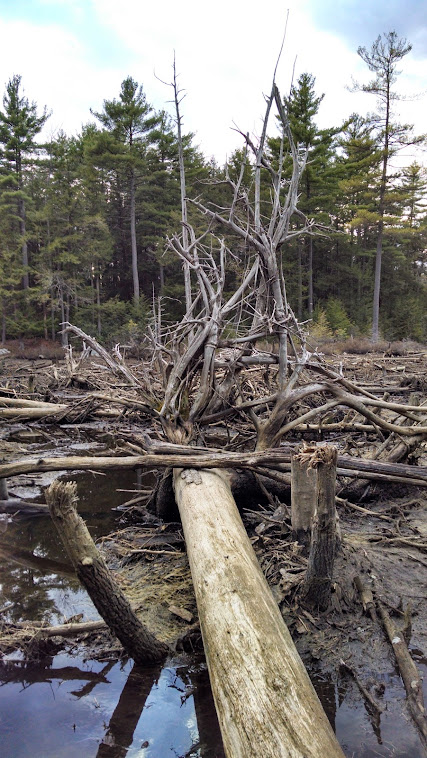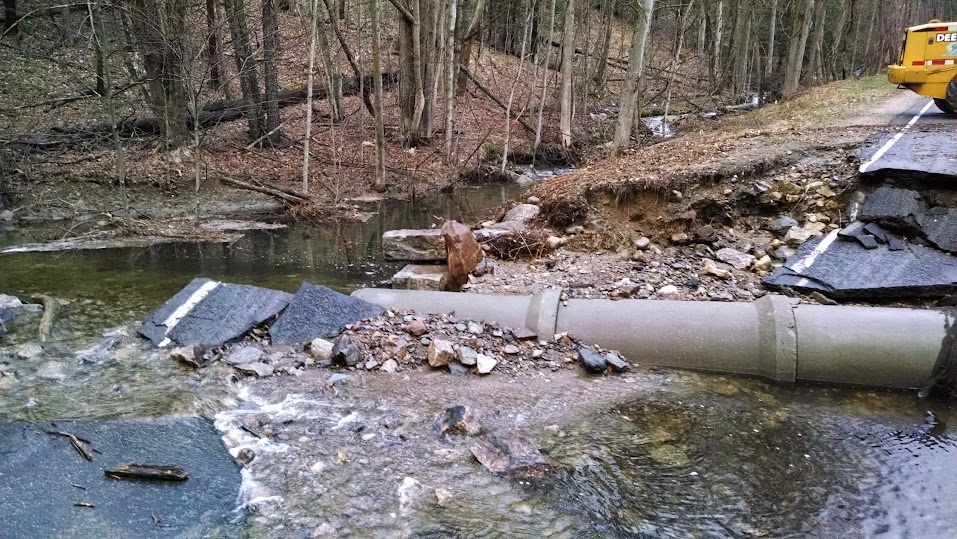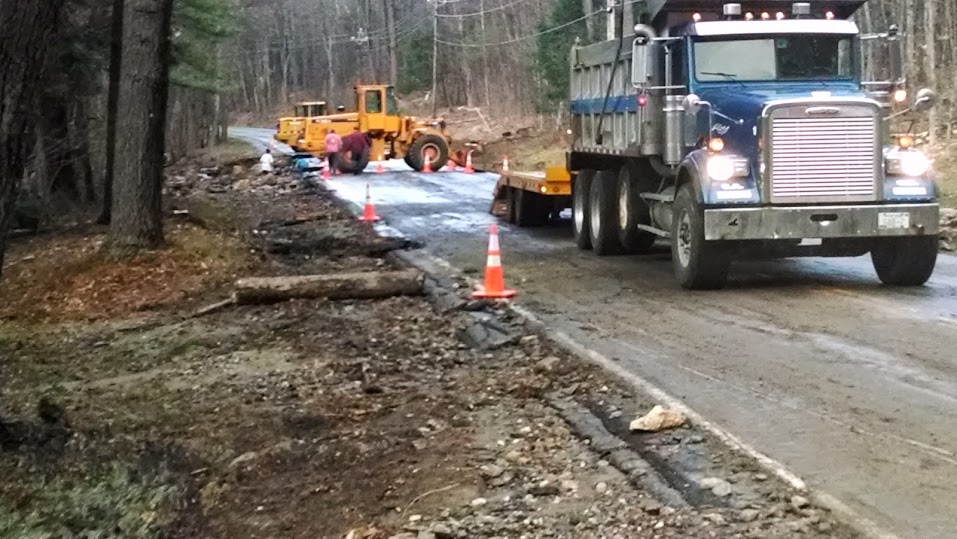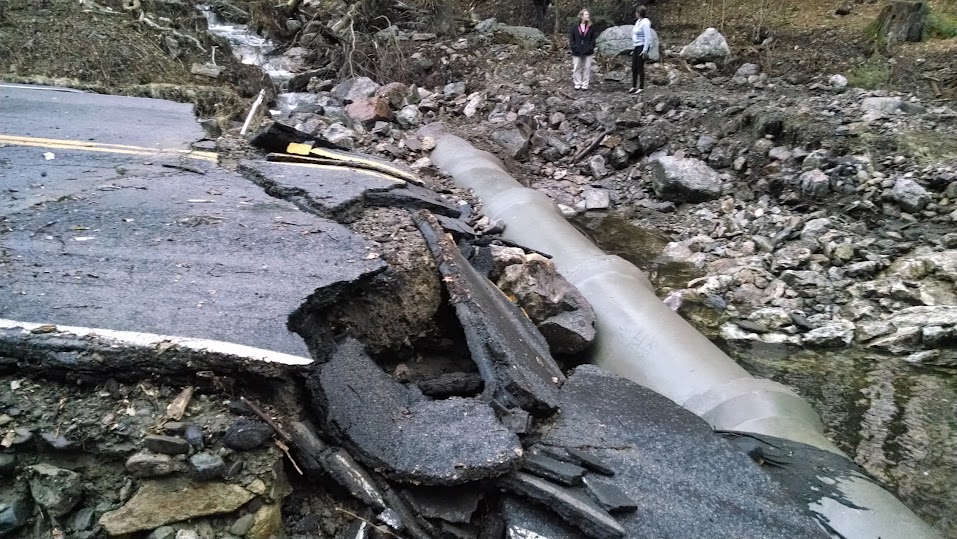Amazing coincidence going on here...I talk to the Seabrook’s senior inspector this morning at 9am and the inspection report comes out at 3 pm.
I am going to tell you
what the real Seabrook was/is. It was reported the bp line was leaking drops of
water last August. Seabrook watched it for weeks doing nothing before the
little hole blew out and then the leak rate challenged plant licensing according
to the inspectors. Seabrook’s first instincts were to wrap it in rubber and tie
it off. I believe the inspectors said this was insufficient. The inspector had
to call his boss and he had to step in. Then Seabook welded a metal patch all around the hole.
It doesn't sound like Seabrook is adiquately self directed.
I think above exactly expresses the real
hearts the Seabrook’s staff...I am disappointed the inspection report didn’t
carry this.
The sin, this is the second leak in this length of pipe...it should have never happened if they were a competent nuclear plant operator. Worst, they would have measured the hole accurately within the first hours of the leak...then installed that weldolet.May 6, 2014Seabrook, NH 03874
SUBJECT: SEABROOK STATION, UNIT NO. 1 - NRC INTEGRATED INSPECTION
REPORT 05000443/2014002
Annual Sample: Increasing Frequency of Leaks in Service Water Piping in the Vicinity of
Installation/Fabrication Welds
a. Inspection Scope
During the period January 27 to January 31, 2014, inspectors reviewed a root cause evaluation (RCE AR 16379222) completed by NextEra staff for a service water pipe leak that occurred in August 2013. This problem was described in a licensee event report submitted to the NRC dated December 23, 2013. The inspectors determined the effectiveness of actions by NextEra staff to identify, characterize, correct and prevent reoccurrence of SW system leaks.
The inspectors assessed problem identification threshold, apparent cause analysis, extent of condition reviews, and timeliness of corrective actions. The inspectors reviewed documents listed in the Attachment to this report and interviewed NextEra engineering personnel to assess the effectiveness of the planned, scheduled, and completed corrective actions to resolve the identified deficiency.
The inspectors reviewed non-destructive test procedures, procedure qualifications including test personnel qualifications to determine compliance with the applicable American Society of Mechanical Engineers codes and standards. Also, the inspectors reviewed system health reports, work orders, procurement documents, drawings and photographs to determine if the nonconforming condition was appropriately identified, documented, characterized and entered into NextEra’s corrective action process. The inspectors reviewed root cause evaluation AR 16379222 and interviewed members of the evaluation team. The inspectors interviewed the qualified non-destructive test examiner to evaluate the ultrasonic test method used. Test results were reviewed with the test examiner to assess the remaining wall thickness for continued operation without encroaching on minimum wall requirements.
b. Findings and Observations
No findings were identified. The root cause evaluation and corrective actions were reasonable, appropriate and timely.
NextEra’s root cause evaluation addressed a history of SW degradation (corrosion/ erosion) resulting in wall thinning and pressure boundary penetration and leakage. The areas where wall thinning and leakage occurred was determined to be associated with the loss of protective coating and/or liner failure at fabrication/installation welds which typically results in turbulent fluid flow. This turbulent flow was particularly aggressive in the attack of base metals and protective coatings at these weld locations and configuration changes. The inspectors assessed the root cause determination, results of the extent of condition investigation of other locations within the SW system and other fluid (circulating water) systems with similar piping materials, operating parameters and configurations.
The inspectors noted that examination using ultrasonic testing was performed at selected locations with known change in flow patterns and velocity changes. The results of this testing identified areas exhibiting variable wear rates. An evaluation of these test results was made to determine pipe structural and pressure retaining integrity.
The inspectors visually examined several portions of previous SW pipe and fittings that had been removed from the SW system in prior outages due to identified leaks. The removed samples provided confirmatory evidence of corrosive/erosive attack from turbulent flow at root locations of field welds, configuration changes and pipe to fitting intersections. These locations revealed characteristic “pin hole” leaks at weld locations and a general “wastage” of pipe and fitting interior diameters. These locations were evaluated for compliance with minimum wall thickness requirements. Those locations which were identified as active “leaks” at weld locations or, where areas exhibiting loss of wall thickness and were encroaching on minimum wall requirements, were dispositioned for repair/replacement in the CAP.
The inspectors determined that this issue received appropriate management attention as indicated by the corrective action that was taken to perform a temporary leak repair by the installation of a weldolet encapsulating the leak location. At the next outage, (OR16) the weldolet will be removed and replaced with a more suitable “flush patch”. The patch will be coated internally with a corrosion/erosion resistant material. The inspectors discussed the licensee plans to systematically remove and replace the SW piping with a base metal that is significantly more resistant to erosion/corrosion attack. The inspectors examined numerous lengths of pipe and fittings which were staged.
May 7
Had a wonderful discussion with senior resident Cataldo today. At one point I will trying to end the conversion...but he didn't want to stop talking. So we talked for another half an hour or so. We talked about the service water system...my side is the service water piping has had too many problems and should be replaced. Basically he said according to regs we can't force them to change out the piping. Going to have to wait until the inspection findings next cycle. Basically I said you guys don't have a big enough hammer to create fear...to get them to change their behavior. There is a repetitive nature to these problems.
I just wanted to let the NRC know somebody outside is very concerned about the reliability of Seabrooks service water piping...I am convinced the agency heard me out.
And they know I feel it is a problem at many plants. I like Mr Cataldo...that is not to say we see everything the same. (1.5 hour discussion)Republished from Feb 28.
I like an acknowledgement like this.
CHAIRMAN Resource
This is to acknowledge receipt of your communication to the Chairman of the U.S. Nuclear Regulatory Commission. Thank you for your input. Office of the Secretary U.S. Nuclear Regulatory Commission
To Me
Today at 10:46 AM
This is to acknowledge receipt of your communication to the Chairman of the U.S. Nuclear Regulatory Commission. Thank you for your input.
Office of the Secretary
U.S. Nuclear Regulatory Commission
This is what I wrote.
Dear Chairman Macfarlane,
I find the below appalling. I reported it to the OIG electronically and to the NRC safety hotline.
Thanks,
Mike Mulligan
Hinsdale, NH
16033368320
"The Adams title on an official NRC document is meant to be disrespectful to our political system and to a US Senator! I consider it agency wrongdoing. The word“ plumbing” is meant to be professionally disrespectful and is meant to be a belly laughing insider joke to everyone who reads the title on ADAMs.
I am the guy who wrote up the complaint and submitted it to Senator Shaheen, who forwarded it for investigation to the NRC. Did I ever once say on my complaint it was a plumbing problem? It is Seabrook's service water system and it supports very important nuclear safety equipment.
I have explained it all on my blog: ‘The Popperville Town Hall’:
http://steamshovel2002.blogspot.com.
Allegation Department?
I am a transparency freak!"
Back at you babe, I sent a electronic message to the OIG and a copy to the Chairman.
The NRC frames it as a plumbing problem on their notification ticket dated 11/20/2013. Where in the hell did the word "plumbing" come from? This NRC official can't spell deteriorating?So today March 1, 2013 I called the NRC Allegations hotline. I wanted to begin documenting my concern. I explained my problem, told them the agency was being disrespectful to a NH Senator, and gave them the two ML accession numbers with the offending NRC document titles. Told them it is all explained on my blog "The Popperville Town Hall". These guys didn’t seem to be interested in it. They were only interested if it was a nuclear safety problem.
You know, what is a nuclear safety problem? It is a huge nuclear safety problem if a independent agency was contemptible and disrespectful its legislators and congressional overseers. Then you would have a runaway independent agency uncontrollable to the higher political arms of our government!The safety hotline did say I should report this to the OIG if I suspect NRC official wrongdoing...
Seabrook's Crap Cooling Water system...
Did I ever once mention the word plumbing in my complaint?
A lowly Shaheen aid might have first generated the word plumbing...but agency didn't protect the Senator from embarrassment. The agency intentionally amplified the word-speak mistake with the intent of demeaning a US Senator over "Constituent "services"! Seeing how it was my "Allegation"...if the Allegation department would have called me up I would have straightened out the agency with the word plumbing.
The title
should have spoke like "re: Seabrook-Service Water System".
The exact title words on Adams:
(ML14037A126)Senator Jeanne Shaheen E-Mail re: Seabrook-Piping/Plumbing (Response)
So are
you saying if it was the discharge of a plant toilet or the service water inlet
of an emergency diesel generator, it would be both titled “Seabrook-piping/plumbing”?
It is just crazy bureaucracy. Something is wrong with this rule! A professional
would tend to open up the link more if it included “service water system”.
God damn it, am I talking about Pilgrim or Seabrook? Honestly,
plumbing... I admit, “deteriorating” is a terrible word to spell. You see where this is heading, I erred with blaming the wrong parent corporation and they blamed the wrong plant and state.
“Subject: Senator Jeanne Shaheen E-mail, re: Constituent concerning issues with deteorating plumbing around the plant at Seabrook,"
Honestly, on ML14007A715, the ticketed (Constituents Correspondence) document...what the hell is wrong with the NRC? They can't even keep the Senators and state's names straight in their heads...what plant is in what state. Jesus? This is on the title page...the NRC thinks I am talking about the Pilgrim plant and Massachusetts. Does the EDO and the chairman think this...this has gone through their offices...do they know which plant is in which state? There are answering Senator Shaheen and they name it in the document the"Pilgrim Plant". These are the document experts with big degrees! "Signature of the EDO"...is he stupid? And all the officials who read this document? Come on! I'll bet you it comes from a unpaid intern.
Subject: Pilgrim Nuclear Power Plant
These are the games teenagers play. Is the agency is purposely playing stupid with the intent of hurting Senator Shaheen in the nuclear power arena! This is a small example with how out of control the NRC has become with government oversight.
More than anything else, the agency is a word, language and a communication expert!
That is a special agency process says the notification ticket.“Senator Jeanne Shaheen, E-mail re, Constituent concerning issue with deteorating plumbing around the Plant at Seabrook.”
File notification says it is a "Allegation.
Here below is the NRC's responce.
February 14, 2014
The Honorable Jeanne Shaheen
United States Senate
Washington, DC 20510
Dear Senator Shaheen:On behalf of the U.S. Nuclear Regulatory Commission (NRC), I am responding to a January 7, 2014, email from Sarah Holmes of your staff forwarding an email from your constituent, Michael Mulligan. Mr. Mulligan provided a detailed account of his concerns associated with the service water piping system at the Seabrook Station nuclear power plant. The NRC is well aware of Mr. Mulligan’s concerns and has discussed them with him in the past. Please be assured that the Seabrook Station service water system currently meets NRC regulatory requirements and is capable of performing its safety function.Because the service water system cools important plant equipment that is continuously operating, much of the system is always in service. Therefore, the licensee regularly monitors the condition of the system via flow tests, as well as periodic examinations of portions of the interior of the piping and measurements of its wall thickness. The NRC has conducted several of its own inspections of the condition of this system over the years, and has taken enforcement action when the system was not in compliance with our requirements.Due to the design of a majority of the piping system (carbon steel lined with cement for corrosion protection), NextEra Energy Seabrook, LLC (NextEra or the licensee) has experienced degradation of the lining of the piping and subsequent corrosion of the pipe wall in some areas, principally downstream of pumps and valves where the water flow is turbulent. Where lining erosion was experienced, NextEra removed the cement lining and installed alternate materials. In select areas, the licensee has experienced some problems with these alternate materials that have resulted in pieces of the lining breaking..
(Well, they botched the initial readings on the nature of the “conical” pipe wall flaw and the NRC inspector calls the staff incompetent over this event's reportability. You notice the NRC doesn't mention that the outside hole is much smaller than the inside hole...that the deterioration occurred unknown very quickly and Seabrook never anticipated the defect worsening until the weep leak and worst the later the larger leak. I guess being stupid is not agaisnt the NRC's rules!
Basically, if they followed the rule they would have been required to shutdown with hours...instead of a weeks of leaks to get special permission to stay up at power. The staff of this plant should have made the service water system durable enough to never be challenged by pipe corrosion.
These guys have a long history of service water leaks and they habitually make non conservative calls over the reliability of the system and the degradation's reportability. Anticipating problems is consider a sin in NextEra!
The excessive flow in the system and destructive turbulence around some components is a serious initial design defect. These problems are going to reappear over and over again unless the design of the system is changed.
No doubt the agency has had inspection activities of recent at Seabrook. These activities are not sufficient to get a major behavior change and attitude out of NextEra. Recently the plant’s Union President spoke publicly about the dire culture changes occurring through the parent corporation's financial problems and budgets.I think Seabrook’s troubling behavior is intensifying and shows absolutely no signs of abating.
Lets just say, I am always entertained by the agency's touristy happy-land spin on events at the nuclear plants.
I am telling you guys, there is a huge difference between meeting the minimums intent of the rules and doing the “right thing”. It sits way above financial or “being in group” considerations!)
Here is my response to Gov Shaheen:...free and/or corrosion of the underlying carbon steel piping. The NRC inspected these issues under the agency’s Reactor Oversight Process, dispositioned the individual performance issues in accordance with the NRC Enforcement Policy, as applicable, and documented these inspections in NRC Inspection Reports. In the long-term, NextEra is in the process of replacing critical sections of the piping with an unlined stainless steel alloy that is corrosion resistant, which will ensure the service water system continues to perform its safety function.Regarding the particular incident in late August 2013, referenced by Mr. Mulligan, where a small (less than ½ inch diameter) through-wall hole developed in the service water system, NextEra made a temporary repair to the pipe using a technique that was reviewed and accepted by the NRC. Specifically, the licensee submitted a request to the NRC to be relieved of compliance with the applicable American Society of Mechanical Engineers (ASME) developed code and provided the information to justify why this temporary repair method was technically acceptable as an alternative to the method prescribed by the applicable ASME code. The NRC concluded that the licensee’s relief request was acceptable and that the system with the temporary repair was capable of performing its safety function. This spring, NextEra will either make a permanent ASME code-compliant repair to this portion of the service water system or replace the affected section of piping. The NRC did have concerns with the technical adequacy of the evaluation performed by NextEra when the leak first developed regarding the ability of the system to perform its design functions (i.e., an operability determination), and took appropriate enforcement action. However, at no time was there an indication of falsification regarding this operability determination by the licensee.The NRC will continue to monitor the condition of the service water system to ensure that proper maintenance, testing, and repairs are performed and that the system remains fully capable of performing its safety function. If you need any additional information, please contact me or theOffice of Congressional Affairs, at (301) 415-1776.Sincerely,/RA/Mark A. SatoriusExecutive Directorfor Operations
Sarah,
I really appreciate the Senator Shaheen passing my message onto the NRC. Really, thank you! It does a lot of good allowing the NRC, licensee and other nuclear plants' staff seeing a senator and us bantering this around a bit. I am certain Seabrook’s staff is really paying attention to the NRC response.But there is another reality under this. I am just going to be blunt. There is a greater truth under this that the agency is just skimming over. This agency has absolutely no fear that the Senate or the House can enforce honesty and full truth telling with this agency.
What is amazing with the agency from the recent past is the amount of time these highly experienced and highly educated professional experts have spent on me...a member of the public. It would really cost big bucks if I was forced to pay for these professional expert time! We are talking about literary hours of phone time. But I never get to see the actual evidence to make my independent judgment with what it means. It is always their self-interested interpretation I am dealing with. There is a kind of technical or agency spin that always goes on.I really appreciate the agency using my real name...they usually call me “it”. I love transparency!But I got to tell you in the conditions on the NEISO market and the grid...we actually have a shortage of electricity in NE today. Somebody sneezes in Maine and the price of market electricity increases by a factor of 6. In the winter of 2013, the Pilgrim plant had bought new defective and leaking safety relief valves. They were reducing power and had two shutdowns over these poor quality nuclear safety components. Our grid was so fragile...not enough natural gas pipe line capacity...when Pilgrim powered down, it threw the NE grid into a crisis and we almost had widespread blackout in very cold weather.During Aug 2013 with Seabrook’s leaking service water piping, it could have been the same if we were in a prolonged summer heat spell. I certain the uncertainty with Seabrook last Aug along with a fragile electric market, this kicked up the market price of electricity.It is going to be a really expensive for us if these remaining nuclear plants aren’t performing proper maintenance ...they start tripping and powering up all the time. These guys nationwide have performed 100’s of millions of dollars of poor quality maintenance. The Pilgrim plant has become very unreliable in the last year...the NRC is on their case.And there are growing implication that repeat powering up and down of these nuclear plants, that are driven by poor maintenance and upkeep, are damaging nuclear equipment and components...Palisades CRDMs and Pilgrims highly radioactive crud problems. Is Seabrook with the crappy service water piping heading that way?Believe me, just meeting the minimum requirements of NRC nuclear safety rules in order to save a few pennies...is not near good enough to protect the interest of New Hampshire, our greater New England and our beautiful nation.
The NRC usually would include my letter to Senator Shaheen. If the agency chose to not publish it...this is a typical action to protect the reputation of the NRC officials and plant inspectors.
The only way you are going to get at some of the truth with what is going on at Seabrook...it to get the actual people to swear under oath and interview them. We think the plant is undergoing a lot more stress than what is admitted and the employees are being intimidated. Recently Seabrook was having a Union contract dispute with NextEra...the Union president explained to the news media the new pressures Seabrook was undergoing. Mainly the cheap prices of natural gas were financially pressuring NextEra and Seabrook.Union President on Seabrook’s financial pressures:Thanks,Mike MulliganHinsdale, NH16033368320
...Just trying to put this in a context; let’s say you reduce the piping wall thickness to all the systems and components in the plant. We are thinking metaphorically. They got millions of components...certainly a million components in Seabrook. That will cause them to breakdown and trip all the time. It is very dangerous business reducing the reliability and durability globally in all the components...that is Pilgrim and Palisades.This below is a excerpt from my letter to Senator Shaheen.
And if a lot of substandard non-safety equipment continuously causes them trouble...it will dilute the site’s resources paying attention to the safety equipment.We are talking about a tremendously complex machine with an enormous amount of components and a tremendously complex organization that is needed to support a nuclear plant...indeed a huge fleet of nuclear plants.And if this is done right, it creates tremendous benefits to society and the utility!These guys loose themselves in the complexity all the time...It is hard for people to understand the scale of these things...I am done for now. Again, thank you for your attention with Seabrook!Mike
Seabrook Nuclear Station's "Crap" Service Water Piping System"Seabrook nuclear plant was brought on line in 1990 with cheap and non-corrosion resistant carbon steel service water piping. Within two years, piping integrity problems began showing up with pitting and local corrosion. And this problem has only gotten worst and it’s running out of control as I write. It is corrupting the staff of this organization.In 2011 they replaced a 30 year old 8 foot section of 24 inch (huge) width pipe on the service water strainer by pass line. I think because of corrosion issues. It seemingly had a secret failure of some sort in 2011, as the NRC didn't disclose it in their most recent inspection report (2013001). They replaced it with new carbon steel piping that was lined with so called super epoxy material Belzona. It failed within three years during August of this year. This is called progress. How do we know if the Belzona isn't’ going to clog again the emergency diesel generator cooling water orifices?:"








